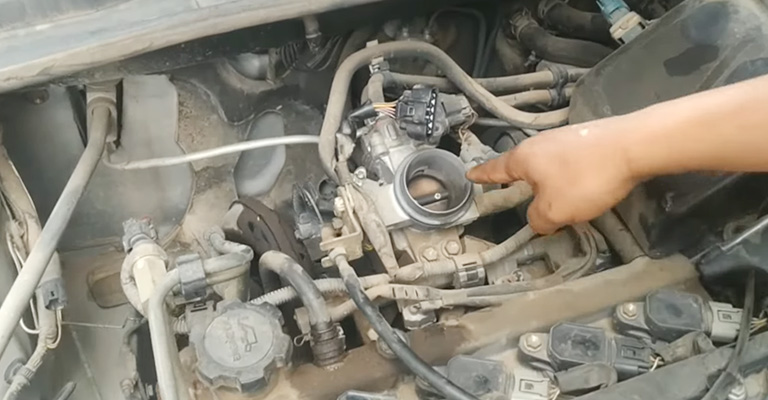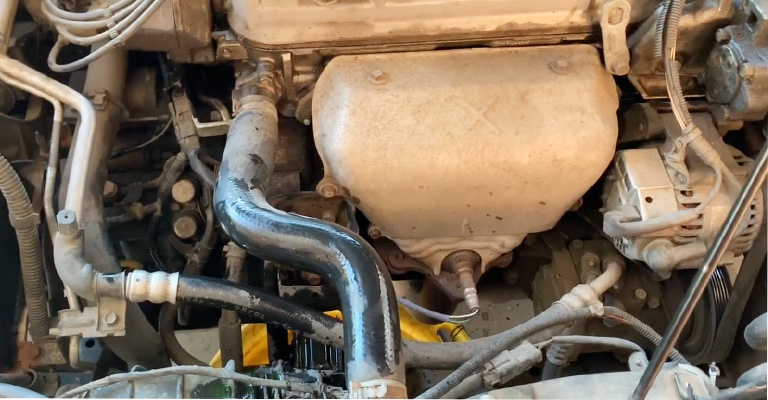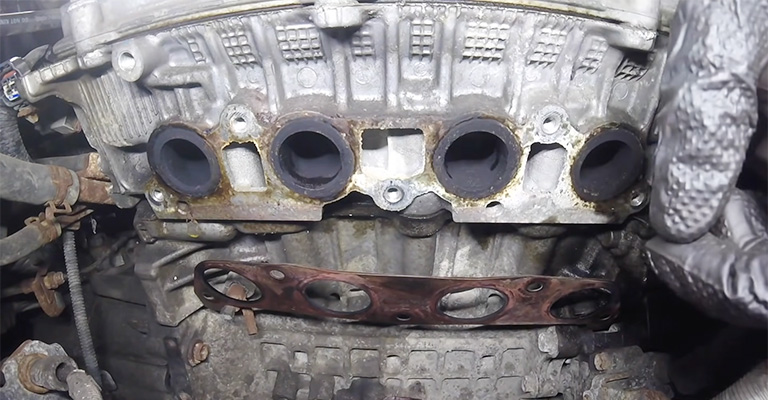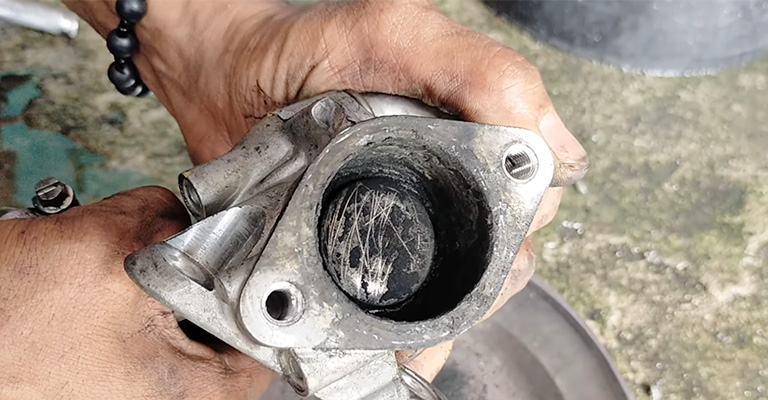Modern vehicles have a lot of diagnostic trouble codes that get activated when there are issues in the engine. And Honda P2279 is one of those codes.
Diagnostic trouble code P2279 is triggered when there is a vacuum leak in the intake manifold, and the ECM senses the increased amount of air in the engine.
If the engine vacuum leak isn’t fixed soon, that can lead to some other severe engine issues; thus, it’s mandatory to understand the factors that can lead to vacuum leaks and the solutions which we’ve covered in this guide.
Have a look.

What’s DTC Honda P2279?
DTC P2279 is an indication that there is a vacuum leak in the engine that’s allowing more air to enter. If you’re not familiar with the vacuum leak, let us help you understand it.
In the engine, there is an air intake tract which we call the throttle body, through which air enters the engine. And when along with the throttle body, air enters in other ways; in automotive terms, that’s known as a vacuum leak.
The throttle body has a sensor named MAF (mass air flow), which measures the air passing through the throttle body. In case you don’t know, the older Honda vehicles don’t have MAF sensors, Honda has used MAP (manifold absolute pressure) sensors.
When air enters the intake manifold of the engine through other ways, the MAF sensor can’t detect that. The sensor will only detect the air going via the throttle body and will send the signal to the ECM.
But when the ECM senses that the presence of air in the engine is higher than what the MAF sensor is indicating, ECM activates P2279 to tell that there is a vacuum leak in the engine.
6 Symptoms of DTC Honda P2279
When P2279 DTC is activated, your vehicle might show the following symptoms.
Engine Check Light

Whenever there is something wrong with the engine, the check light will turn on. This is the first symptom you’ll see when there is an abnormality in the engine. That being said, in some cases, the engine check light turns on without any valid reason as well.
Rough Idle
This is a common symptom of many engine issues, and a vacuum leak in the engine is one of them. When the vacuum leak is major and more air enters the engine, the throttle body will try to control it, which will lead to a hard idle.
Reduction in Fuel Economy
More air into the engine will result in high air in the air-fuel ratio, which will lead to an imbalance. And this imbalance can reduce the fuel economy noticeably.
Rough Acceleration

When there is a vacuum leak, and more air enters the engine, that’ll cause an imbalance in the air-fuel ratio. And that can lead to rough acceleration.
Upon pressing the accelerator, you’ll feel like something is stopping the engine from speeding up.
Misfires
Engine misfiring or backfiring is a common symptom of vacuum leaks. It also happens when the engine is running lean (High fuel and low air ratio).
Noise
A not-so-common symptom of engine vacuum leak is high pitch noise coming from the engine. It only happens when any hose has leaks.
Causes and Solutions for DTC P2279
Many factors can lead to engine vacuum leaks, but understanding the most common ones will allow you to take the necessary steps.
Broken Hoses

With time and exposure to vibration, heat, and dust, vacuum and intake hoses get dried and brittle. Therefore, hairline cracks start to grow and result in leaks.
Broken or worn-out hoses are very common in old vehicles.
When vacuum or intake hoses are broken, they show a symptom which is high pitch noise. If you hear a high pitch noise coming from the engine area, then chances are high that there are leaks in the hoses.
Solution
For temporary use, depending on the leak condition, hoses can be repaired. But after a while, more leaks will appear.
Therefore, the best option is to replace all the old hoses.
Leak in the Intake Manifold Gasket

Intake manifold gaskets can develop cracks with use; if it does, then more air will be pulled into the engine leading to lean engine condition. It’s very common in vehicles that come with plastic gaskets; they break or wear out very quickly.
Solution
When there is a leak in the intake manifold gasket, replacement is the only way.
Cracks in the Positive Crankcase Ventilation System
In some vehicles, the PCV system has some plastic and rubber parts. And due to high mileage, heat, and vibration exposure, the rubber falls apart, and the plastic gets cracked, leading to major vacuum leaks. The most common symptom of leaks in the PCV system is a loud moaning or hissing noise.
Solution
The only solution to the leaked PCV system is replacing the entire system. Otherwise, the entire engine will get damaged in no time.
Stuck EGR Valve

The EGR system has a valve that opens up for transferring exhaust gasses into the intake manifold and then closes. And this system connects the intake manifold to the exhaust system.
If for any reason, the EGR valve gets stuck in the open position and can’t close, that will lead to a major leak. One most common reasons for the EGR valve getting stuck open is carbon buildup.
Solution
It’s very easy to fix a stuck EGR valve. All you need to do is, locate the valve and unstuck it. And you’ll also have to find out the factor that causes the valve to stick.
Frequently Asked Questions
It’s not at all safe to drive with engine vacuum leaks, as that can permanently damage the engine. But if you’re talking about driving to the nearby mechanic shop, you can do that.
When there is a leak in the intake hose or intake gasket or vacuum hose, the engine will make high pitch hissing or loud moaning noise.
Conclusion
In most cases of vacuum leaks, the culprits are broken or worn-out vacuum and intake hoses. Apart from the mentioned ones, there are some other factors as well that can cause engine vacuum leaks.
However, if you’ve gone through the entire guide, now you know a lot about Honda P2279 diagnostic trouble code. And we hope the provided information helps you solve the issues.

Leave a Reply